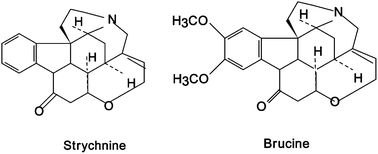Monitoring strychnine and brucine in biochemical samples using direct injection micellar liquid chromatography
Abstract
Nux-vomica is a tropical plant that contains two

* Corresponding authors
a
Dr H.S.Gour University (A Central University), Criminology and Forensic Science, Sagar, Madhya Pradesh, India
E-mail:
dev1bose@rediffmail.com
b Central Forensic Science Laboratory, Chandigarh, India
c Department of Applied Chemistry, Institute of Technology, Banaras Hindu University, Vanarasi, India
d Universitat Jaume I, Química Física i Analítica, Campus Riu Sec, La Plana 12071, Spain
Nux-vomica is a tropical plant that contains two

 Please wait while we load your content...
Something went wrong. Try again?
Please wait while we load your content...
Something went wrong. Try again?
S. D. Mishra, D. Bose, S. K. Shukla, A. Durgabanshi and J. Esteve-Romero, Anal. Methods, 2013, 5, 1747 DOI: 10.1039/C3AY26014C
To request permission to reproduce material from this article, please go to the Copyright Clearance Center request page.
If you are an author contributing to an RSC publication, you do not need to request permission provided correct acknowledgement is given.
If you are the author of this article, you do not need to request permission to reproduce figures and diagrams provided correct acknowledgement is given. If you want to reproduce the whole article in a third-party publication (excluding your thesis/dissertation for which permission is not required) please go to the Copyright Clearance Center request page.
Read more about how to correctly acknowledge RSC content.
 Fetching data from CrossRef.
Fetching data from CrossRef.
This may take some time to load.
Loading related content
